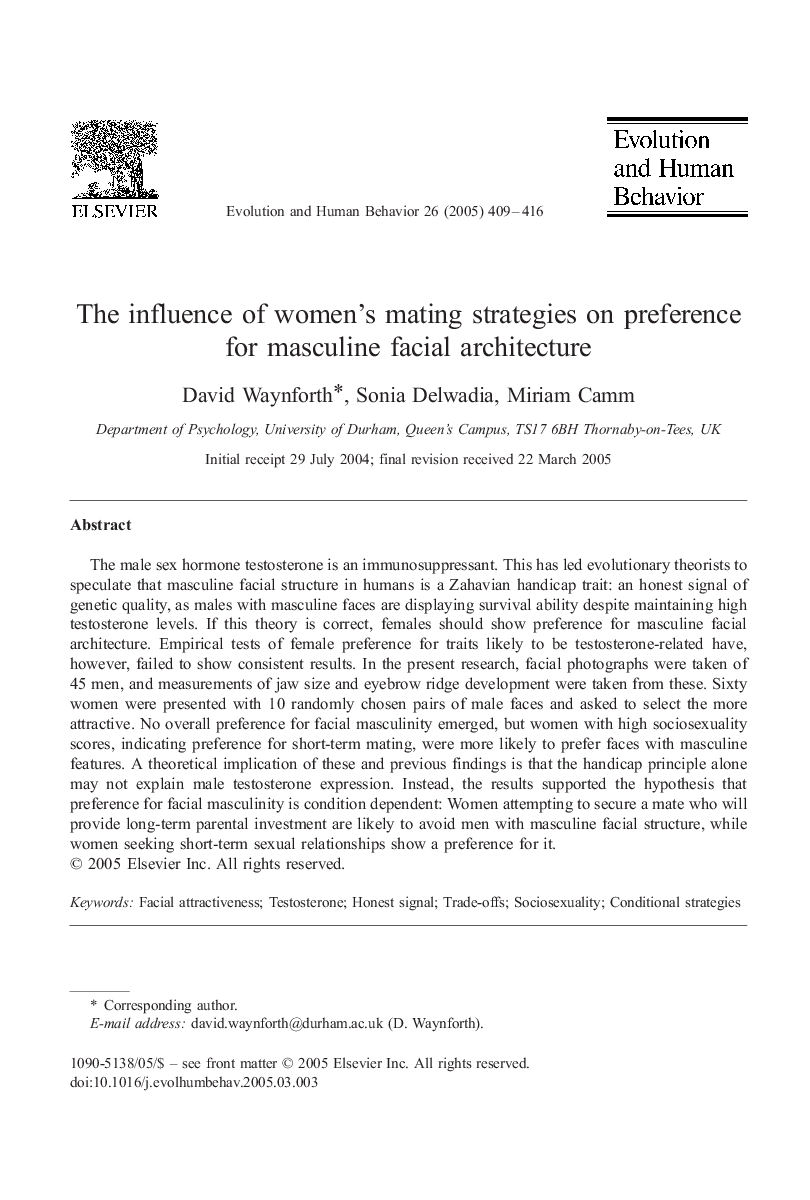| Article ID | Journal | Published Year | Pages | File Type |
|---|---|---|---|---|
| 10464123 | Evolution and Human Behavior | 2005 | 8 Pages |
Abstract
The male sex hormone testosterone is an immunosuppressant. This has led evolutionary theorists to speculate that masculine facial structure in humans is a Zahavian handicap trait: an honest signal of genetic quality, as males with masculine faces are displaying survival ability despite maintaining high testosterone levels. If this theory is correct, females should show preference for masculine facial architecture. Empirical tests of female preference for traits likely to be testosterone-related have, however, failed to show consistent results. In the present research, facial photographs were taken of 45 men, and measurements of jaw size and eyebrow ridge development were taken from these. Sixty women were presented with 10 randomly chosen pairs of male faces and asked to select the more attractive. No overall preference for facial masculinity emerged, but women with high sociosexuality scores, indicating preference for short-term mating, were more likely to prefer faces with masculine features. A theoretical implication of these and previous findings is that the handicap principle alone may not explain male testosterone expression. Instead, the results supported the hypothesis that preference for facial masculinity is condition dependent: Women attempting to secure a mate who will provide long-term parental investment are likely to avoid men with masculine facial structure, while women seeking short-term sexual relationships show a preference for it.
Keywords
Related Topics
Life Sciences
Agricultural and Biological Sciences
Ecology, Evolution, Behavior and Systematics
Authors
David Waynforth, Sonia Delwadia, Miriam Camm,
